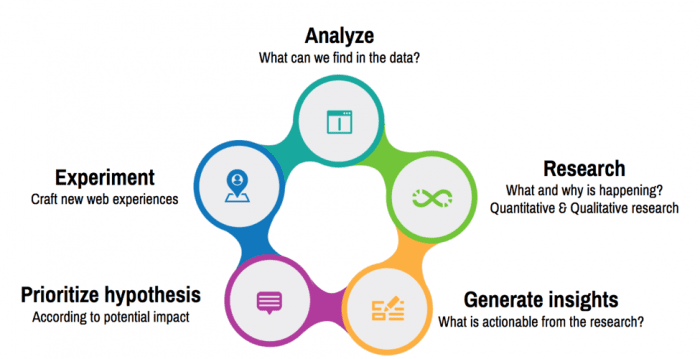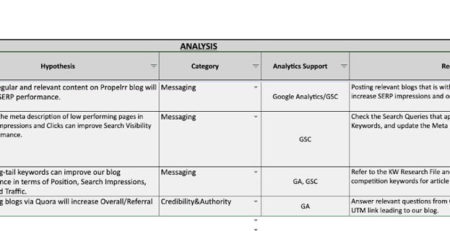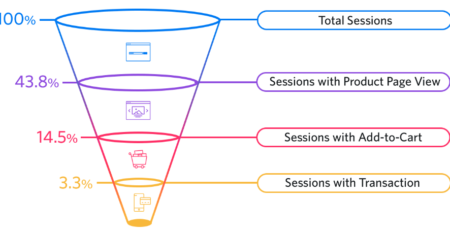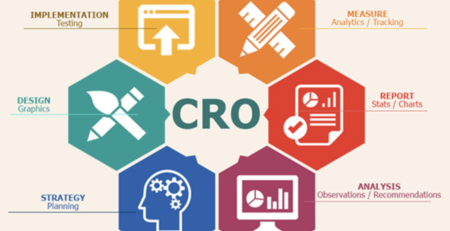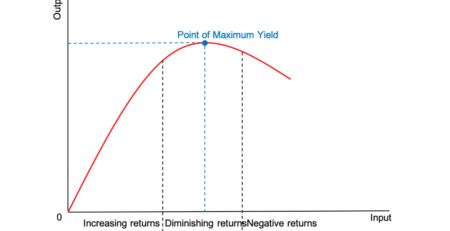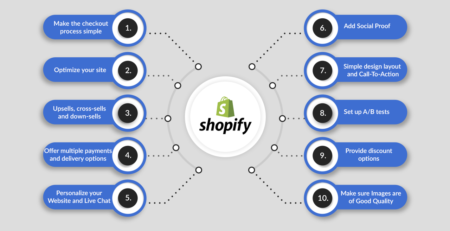When To Use Conversion Rate Optimization?
Wondering when to use conversion rate optimization? Look no further! In this article, we’ll dive into the ins and outs of this powerful technique that can supercharge your website’s performance. So, if you’re ready to boost your online success, let’s get started!
Picture this: you have a website, and you want to turn your visitors into customers. That’s where conversion rate optimization comes in! It’s all about making the most of your website’s traffic, by improving the conversion rate – the percentage of visitors who take the desired action. Intrigued? Keep reading to discover when and how to use this game-changing strategy.
Whether you’re running an online business or a personal blog, conversion rate optimization is essential. It can help you increase sales, generate leads, and grow your audience. So why wait? Let’s unravel the secrets of conversion rate optimization and unlock your website’s potential!
When to Use Conversion Rate Optimization?
Conversion rate optimization is a powerful tool that can help businesses improve their online performance and achieve higher conversion rates. However, knowing when to use conversion rate optimization is crucial in order to maximize its effectiveness and impact. In this article, we will explore seven key scenarios where implementing conversion rate optimization strategies can make a significant difference in achieving your business goals.
1. Launching a New Website or Landing Page
When launching a new website or landing page, it’s important to ensure that it is optimized for conversion. Conversion rate optimization can help identify and resolve any user experience issues that may hinder conversions. By carefully analyzing user behavior and implementing changes based on data-driven insights, you can create an online presence that maximizes the chances of converting visitors into customers.
Conversion rate optimization techniques, such as A/B testing and heatmaps, can help you understand how users interact with your website or landing page. This valuable information allows you to make informed decisions and implement changes that drive higher conversion rates.
By utilizing conversion rate optimization during the launch phase, you can ensure that your website or landing page is designed in a way that captures and retains the attention of your target audience, ultimately leading to increased conversions and business success.
2. Experiencing Low Conversion Rates
If your website or landing page is experiencing low conversion rates, it’s a clear indication that something is not resonating with your target audience. This is where conversion rate optimization comes into play. By analyzing user behavior, conducting user surveys, and performing A/B tests, you can identify the specific pain points and barriers that are preventing users from converting.
Conversion rate optimization allows you to make data-driven changes to address these issues and optimize your conversion funnel. Whether it’s optimizing your call-to-action buttons, simplifying your checkout process, or improving your content, conversion rate optimization helps you fine-tune your online presence for maximum conversions.
By constantly monitoring and optimizing your conversion rate, you can ensure that your website or landing page is continuously improving and attracting a higher number of conversions, leading to increased revenue and growth for your business.
3. Launching a New Product or Service
When it comes to launching a new product or service, conversion rate optimization can be a game-changer. By implementing conversion rate optimization strategies before and during the launch, you can ensure that your target audience quickly understands the value and benefits of your offering, leading to higher conversion rates.
Conversion rate optimization techniques, such as landing page optimization, can help you create compelling and persuasive landing pages that highlight the key features and benefits of your new product or service. By taking into account buyer psychology and incorporating persuasive elements, you can increase the likelihood of visitors converting into paying customers.
Conversion rate optimization also allows you to test different messaging, visuals, and offers to see which combination resonates best with your target audience. This data-driven approach ensures that you are maximizing your conversion potential and are well-prepared for a successful product or service launch.
4. High Bounce Rates
If your website is experiencing high bounce rates, it means that visitors are leaving your site without taking any further action. This can be a result of various factors, including slow loading times, poor design, or lack of relevant content. Conversion rate optimization can help you identify the root causes of high bounce rates and take action to rectify them.
By analyzing user behavior, you can gain valuable insights into what is causing visitors to leave your site. This can include identifying pages with high exit rates, analyzing click patterns, or evaluating the effectiveness of your headlines and calls-to-action.
Conversion rate optimization techniques, such as improving site speed, optimizing content, and enhancing the visual appeal, can all contribute to reducing bounce rates and increasing conversion rates. By making data-driven changes, you can create a website that engages and captivates your audience, ultimately leading to higher conversions and improved business performance.
5. Low ROI on Marketing Campaigns
Marketing campaigns can be costly investments, and it is crucial to ensure that you are getting a solid return on investment (ROI). If you are experiencing low ROI on your marketing campaigns, conversion rate optimization can help you identify and address any conversion bottlenecks that may be hindering your campaign’s success.
Conversion rate optimization allows you to analyze the effectiveness of your landing pages, calls-to-action, and overall conversion funnel. By constantly monitoring and optimizing your conversion rates, you can refine and improve your marketing campaigns to achieve higher ROI.
Through A/B testing and other conversion rate optimization techniques, you can test different marketing strategies, landing page designs, and messaging to see what resonates best with your target audience. By making data-driven decisions, you can allocate your marketing budget more effectively and achieve a higher return on your investment.
6. Conversions Stagnating or Declining
If your website or landing page has experienced a plateau or decline in conversions, it’s time to implement conversion rate optimization to turn the tide. Conversion rate optimization can help you identify and address any issues that may be causing the decline in conversions.
Through user behavior analysis and A/B testing, you can identify areas of improvement and make data-driven changes to optimize conversion rates. This may involve revisiting your design, improving your content, or enhancing the user experience.
By actively monitoring and optimizing your conversion rates, you can ensure that your website or landing page remains effective in driving conversions and steadily increasing your business performance.
7. Wanting to Stay Ahead of the Competition
In today’s highly competitive online landscape, staying ahead of the competition is crucial to success. Conversion rate optimization can give you the competitive edge by allowing you to continually analyze and improve your conversion rates, putting you at the forefront of your industry.
By adopting a data-driven approach and utilizing conversion rate optimization techniques, you can gain insights into customer behavior, preferences, and trends. This allows you to make proactive changes to your website or landing page, ensuring that you are always delivering an outstanding user experience that leads to higher conversions.
Conversion rate optimization can also help you stay up to date with the latest industry trends and best practices, keeping you one step ahead of your competitors. By constantly refining and optimizing your conversion funnel, you can maintain your competitive advantage and attract a larger share of the market.
Key Factors to Consider When Implementing Conversion Rate Optimization
When implementing conversion rate optimization strategies, there are several key factors to consider that can greatly impact the success of your efforts. Here are three important considerations:
1. Data Collection and Analysis
Data plays a critical role in conversion rate optimization. Collecting and analyzing user behavior data is essential for gaining insights into what is working and what needs improvement. Tools like Google Analytics, heatmaps, and user surveys can provide valuable data to inform your optimization efforts.
It’s important to have a clear plan for data collection and analysis, ensuring that you are collecting relevant data points and analyzing them effectively. This will help you make data-driven decisions and prioritize optimization efforts based on the most impactful areas.
Regularly reviewing and analyzing data will enable you to uncover patterns, trends, and areas of improvement that may not be immediately apparent. It is an ongoing process that should be integrated into your overall conversion rate optimization strategy.
2. User Experience and User-Centric Design
Creating a positive user experience is crucial for conversion rate optimization. Users should easily be able to navigate your website or landing page, find the information they need, and complete desired actions effortlessly.
Ensure that your design is user-centric, focusing on simplicity, clarity, and responsiveness. Optimize your site speed, mobile-friendliness, and overall usability to enhance the user experience.
Consider user psychology and behavior when designing your conversion funnel. Use persuasive elements, such as social proof, testimonials, and clear value propositions, to build trust and encourage conversions.
3. Continuous Testing and Iteration
Conversion rate optimization is an ongoing process that requires continuous testing and iteration. A/B testing, multivariate testing, and other experimentation methods allow you to test different variables and determine the optimal combination for driving conversions.
Make it a habit to regularly test and optimize different aspects of your website or landing page. This can include testing different headlines, calls-to-action, layouts, color schemes, and more. Constantly refining and iterating based on the results of your tests will lead to incremental improvements in conversion rates.
Remember to track the results of each test and use statistical analysis to ensure that the changes you make are statistically significant and not due to random chance alone.
Benefits of Using Conversion Rate Optimization
Conversion rate optimization offers several significant benefits to businesses that utilize it effectively:
1. Increased Conversion Rates
The most obvious benefit of conversion rate optimization is increased conversion rates. By systematically identifying and addressing conversion barriers, businesses can optimize their websites and landing pages to maximize conversions. This results in a higher return on investment and improved business performance.
Even small improvements in conversion rates can have a significant impact on revenue, especially for businesses with a large online presence. Conversion rate optimization allows businesses to capture a larger share of their existing traffic and convert more visitors into paying customers.
2. Improved User Experience
Conversion rate optimization goes hand in hand with creating a positive user experience. By understanding user behavior and preferences, businesses can make informed decisions to enhance the user experience and make it easier for customers to convert.
A better user experience leads to increased customer satisfaction and loyalty, resulting in higher customer retention rates. It also improves brand perception and can lead to positive word-of-mouth referrals and recommendations.
3. Cost-Effective Marketing
Conversion rate optimization allows businesses to make the most of their marketing budget. By optimizing their conversion funnel, businesses can ensure that the traffic they drive to their website or landing page is more likely to convert into paying customers.
With a higher conversion rate, businesses can achieve a higher return on investment from their marketing efforts. This means that they can achieve the same results with a smaller marketing budget or allocate their budget more effectively to achieve even greater results.
4. Better Understanding of Customer Behavior
Through data collection and analysis, conversion rate optimization provides businesses with a deeper understanding of their customers. By analyzing user behavior, businesses can gain insights into what drives conversions, what barriers exist, and what customers are looking for.
These insights can inform not only conversion rate optimization efforts but also overall marketing and business strategies. By understanding customer behavior, businesses can tailor their offerings, communication, and marketing efforts to better serve their target audience.
5. Competitive Advantage
By actively implementing conversion rate optimization strategies, businesses can gain a competitive advantage in their industry. By continually refining and improving their conversion funnel, businesses can ensure that they are delivering the best user experience and maximizing their conversion potential.
This competitive advantage can lead to increased market share, as well as higher customer satisfaction and loyalty. By staying ahead of the competition, businesses can position themselves as industry leaders and attract a larger share of the market.
Tips for Successful Conversion Rate Optimization
Here are some tips to help businesses achieve success with conversion rate optimization:
1. Set Clear Goals and Metrics
Before embarking on a conversion rate optimization journey, it’s important to set clear goals and metrics. Determine what specific actions you want users to take and define success metrics that align with your business objectives.
By having clearly defined goals and metrics, you can measure the impact of your optimization efforts and track progress over time. This helps you stay focused and ensures that you are making data-driven decisions that align with your overall business strategy.
2. Understand Your Target Audience
Conversion rate optimization is only effective when it is aligned with your target audience’s needs and preferences. Take the time to understand your target audience’s demographics, psychographics, and behaviors.
Through user research, surveys, and data analysis, gain insights into what drives your target audience to convert. Use this knowledge to inform your optimization efforts and tailor your messaging, design, and user experience to resonate with your ideal customers.
3. Test Incremental Changes
When conducting A/B tests and other optimization experiments, it’s important to test incremental changes. Test one variable at a time to accurately determine the impact of that specific change on conversion rates.
This allows you to isolate the effects of each change and make data-driven decisions. Testing incremental changes also minimizes the risk of making drastic changes that may negatively impact conversion rates.
4. Leverage User Feedback
User feedback is a valuable source of information for identifying conversion barriers and improvement opportunities. Encourage users to provide feedback through surveys, live chat, or customer support channels.
Pay attention to common pain points, objections, or suggestions that users provide. This feedback can help uncover blind spots and provide valuable insights into how to optimize your conversion funnel.
5. Be Consistent and Persistent
Conversion rate optimization is an ongoing process that requires consistency and persistence. Set aside dedicated time and resources for optimization efforts and make it a continuous practice.
Regularly review data, conduct tests, and implement changes based on insights gained. Consistency and persistence will ensure that you are constantly improving your conversion rates and staying ahead of the competition.
Concluding Words:
Conversion rate optimization is not a one-time effort but rather a continuous process that requires careful analysis, experimentation, and iteration. By leveraging data, understanding your target audience, and making incremental improvements, you can optimize your conversion funnel to achieve higher conversion rates and drive business growth.
Key Takeaways: When to Use Conversion Rate Optimization?
2. Use CRO when you have a steady flow of website traffic but are not seeing enough conversions.
3. CRO is beneficial when you want to improve user experience and optimize your website for better conversions.
4. Implement CRO if you want to boost your online sales, sign-ups, subscriptions, or other desired actions.
5. Consider using CRO when you have identified specific areas of your website that need improvement to drive better results.
Frequently Asked Questions
In this section, we will answer some common questions about when to use conversion rate optimization (CRO) and its benefits.
1. How do I know if I should use conversion rate optimization?
If you have a website or an online presence and want to improve the number of visitors who take desired actions, such as making a purchase, signing up for a newsletter, or filling out a form, then it’s a good time to consider using conversion rate optimization. CRO helps you identify areas of your website that may be hindering conversions and provides strategies to improve them. It is especially useful when you notice a high bounce rate or a low conversion rate on your website.
Conversion rate optimization is not limited to a specific industry or type of business. Whether you run an e-commerce store, a SaaS platform, or a blog, CRO can help you maximize your website’s potential and increase your overall conversions.
2. What are the benefits of using conversion rate optimization?
The primary benefit of using conversion rate optimization is an increase in conversions, which ultimately leads to more revenue and business growth. By optimizing your website based on user behavior and preferences, you can create a more user-friendly and persuasive experience for your visitors.
Conversion rate optimization also helps you understand your audience better. Through tools like A/B testing and analytics, you can gather valuable data and insights about your visitors’ preferences, pain points, and behaviors. This information can guide your marketing and product strategies, allowing you to make informed decisions that resonate with your target audience.
3. Can I use conversion rate optimization on a new website?
Absolutely! In fact, implementing conversion rate optimization strategies from the early stages of your website can be beneficial. When building a new website, you have the opportunity to design it with conversion optimization in mind. By conducting user research, identifying user flows, and applying best practices, you can create a website that is conversion-focused from the start.
CRO is not exclusive to established websites. Whether your website is new or has been around for years, there are always opportunities to improve conversions and enhance the user experience.
4. Does conversion rate optimization work for mobile websites?
Yes, conversion rate optimization is just as applicable to mobile websites as it is to desktop websites. With the increasing number of people accessing the internet through mobile devices, optimizing your mobile website for conversions is crucial. Mobile optimization includes factors such as responsive design, fast loading times, simplified checkout processes, and clear call-to-action buttons.
When implementing conversion rate optimization on a mobile website, it’s important to consider the unique user experience on mobile devices. Conduct user testing specifically for mobile devices to identify any friction points that may be hindering conversions. By tailoring your CRO strategies to mobile users, you can effectively improve conversions on mobile platforms.
5. When should I seek professional help for conversion rate optimization?
If you have limited knowledge or experience in conversion rate optimization, seeking professional help can be a wise decision. CRO experts have the knowledge, skills, and tools to conduct in-depth analysis, conduct A/B testing, and provide recommendations tailored to your specific website and goals.
If you’ve already made attempts at conversion rate optimization without seeing desired results, or if you want to accelerate the optimization process, hiring professionals can save you time and effort. They can identify areas for improvement more efficiently and implement strategies that have been proven to work in similar industries or niches. Additionally, professionals can provide ongoing monitoring and analysis to ensure continuous improvements and better results.
7 eCommerce Conversion Rate Optimization Fundamentals
Summary
To sum it up, conversion rate optimization is a powerful tool that can help businesses improve their websites. It involves analyzing data, making changes, and testing those changes to increase the number of visitors who take a desired action. It’s important to use conversion rate optimization when you want to boost your website’s performance, increase sales, and improve the user experience. Remember, it’s all about making your website more effective and achieving your goals. So don’t forget to track your progress and continuously improve based on the insights you gather.

